How to understand that corn is ripe: we harvest on time, depending on its further use
Corn was first domesticated by the ancestors of modern Mexicans many thousands of years ago. In Europe, the seeds of this crop began to be grown in the 16th century, in Russia - only in the 18th century. The absolute leaders in corn consumption are Mexicans. Every adult resident of Mexico eats almost 100 kg of corn per year, while a Russian eats less than 1 kg.
The vitamin and mineral composition of corn is varied. The vegetable contains B vitamins, vitamins C, E, PP, K, microelements - calcium, magnesium, phosphorus, potassium, sodium, iron, iodine. The maximum amount of useful substances is contained in ripe corn grains. Therefore, it is important to know when to start harvesting. In this article we will tell you how to understand that corn is ripe and how to determine the ripeness of the cobs.
Corn harvest time
To decide when to start harvesting sweet cobs, focus on such factors: ripening time of a particular variety, climate characteristics of the region and weather conditions, timing of seed sowing.
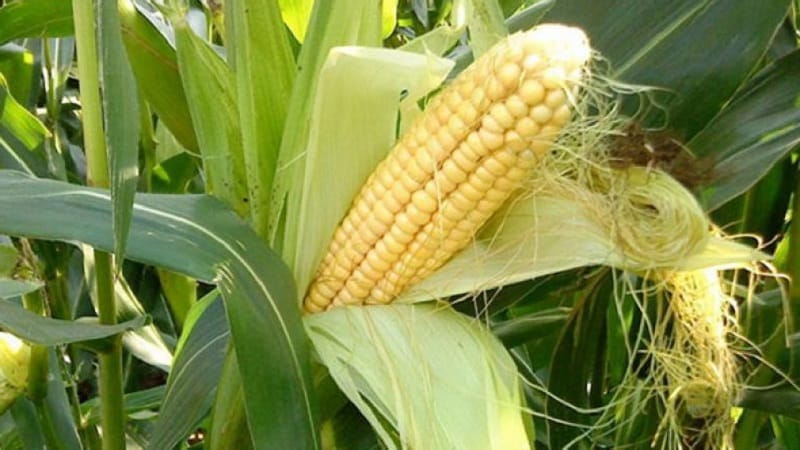
Rate of ripening depending on type
How long does it take for corn to mature? Depending on the duration of the growing season, corn hybrids and varieties are divided into early-ripening, mid-ripening and late-ripening:
- Early ripening varieties. Early ripening corn is harvested 75-80 days after emergence. This group includes the Lakomka variety, the Dobrynya and Early Zolotaya hybrids.
- Mid-season varieties. Mid-season varieties ripen 90-100 days from the moment the sprouts appear. This group is represented by hybrids Pioneer, Ice Nectar, Spirit.
- Late ripening varieties. This corn begins to be harvested 110-140 days after emergence. Late varieties are represented by the hybrids Polaris, Bashkirovets, and Rossiyskaya Lopayshaya.
Ripening time in fields and vegetable gardens
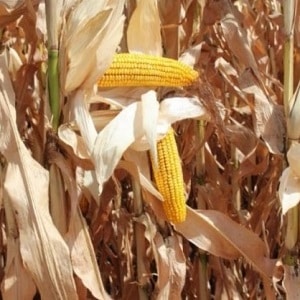
In what month does the “queen of the fields” ripen? The timing of crop ripening varies not only depending on the variety and region of cultivation, but also on the purpose of the vegetable. In vegetable gardens and household plots, mainly early-ripening varieties are cultivated for food consumption - the harvest is harvested starting from the end of July.
On large farms the beginning of the harvesting campaign depends on the purpose of the harvest. The crop is harvested for silage when the stage of milky-wax ripeness comes to an end. At this time, the grains contain the maximum concentration of sugars. On average, the collection of ripe cobs begins in mid-August and continues until October.
How to tell if corn is ripe
In addition to the ripening dates indicated by the manufacturer on the seed package, when determining the degree of ripeness, they are guided by the appearance of the cobs. First of all, the top ears on the stem are checked: they ripen earlier than the rest.
Signs of ripeness
How to determine the ripeness of sweet fruits? After unscrewing the edge of the shell of the corn cob, inspect it carefully. The following signs will help you know when corn is ready for harvest::
- towards the end of the ripening period, the corn grains become full and, under their own weight, deviate to the side until they descend perpendicular to the stem;
- mature fruits are distinguished by their round shape, the cobs are completely filled with grains;
- the grains inside the cob are even and smooth, without wrinkles or dents;
- male flowers at the tops of the stems wither and fall off;
- Ripe corn is separated from the stalk by hand without using a knife or scissors.
Harvest time depending on the purpose of cultivation
When determining the timing of cleaning Further use of the fruit plays an important role.
If the cobs are intended for making popcorn or harvesting seed, then harvesting is carried out during the period of biological maturity.
If corn is intended to be eaten raw, boiled or canned, then the cobs are removed at the stage of milky ripeness.
For fresh consumption
Young corn cobs are chosen for fresh consumption., taken at the stage of milk ripeness. These grains have a delicate sweet taste. The ears closest to the top of the plant are harvested first. They keep up faster than others.
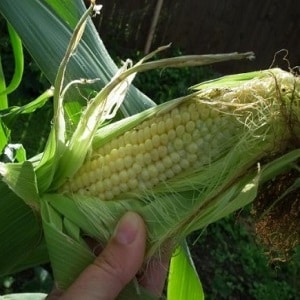
Determine that corn has reached the milky ripeness stage, it is possible by these signs:
- the cobs have deviated from the stem;
- the panicle at the end of the cob has dried out (a panicle that is wet to the touch with a reddish tint indicates that the fruits are not yet ripe);
- the cobs are completely filled with grains (the tip of a ripe cob is blunt and round);
- the grains have acquired a pale yellow color and, when pressed, release a white liquid (if the grains are white and the juice is clear, then the fruits are not yet ripe);
- To separate the cob from the stem, simply squeeze it with your hand and turn it around its axis.
Once the cobs are removed from the stalks, the sugars are quickly converted to starch.. Therefore, they are eaten in the first day after collection, while they retain their excellent taste.
Attention! It is not advisable to skip harvesting time or harvest the cobs too early. Overripe fruits lose their juiciness and sweetness, and the grains become hard.
Reduced temperature slows down the conversion process sugars into starch. That is why it is better to pick corn in the cool morning hours and store it in the refrigerator, covered with a damp cloth. This way it will retain its sweetness for a whole week.
For drying grains
If you plan to use corn for drying grains, That The cobs are harvested after the stems and leaves are completely dry. At this time they easily break off from the stem. After harvesting, the leaves are removed from the cobs and placed in a cool place for one month to fully ripen.
After the grains have dried, they are separated and placed in an airtight container. Store them in a cool, dark place.
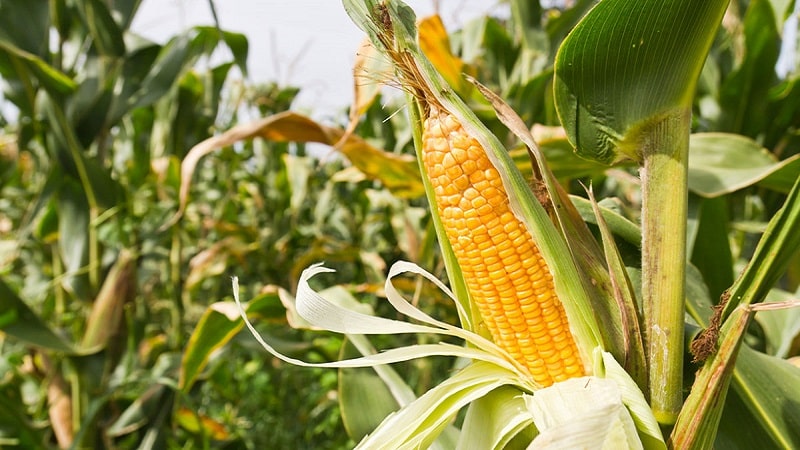
Boarding
For preparing planting material Corn grains are harvested at the stage of biological ripeness. This phase occurs when the stems and leaves dry out completely and the cobs easily break off from the stem.
Harvested corn is stripped of its outer leaves. and transferred to a cool, dry place for 1-2 months to dry. Completely dried grains are separated from the cob and stored in a cool place away from sunlight.
Important! Properly dried grains are suitable for planting for 5-10 years, but only if storage conditions are met.
For silo
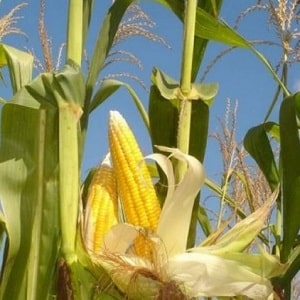
Silage with the most valuable nutritional qualities is obtained when harvesting the crop at the stage of waxy ripeness, or at the end of the milky-wax stage. The moisture content of the corn grain at this moment is about 65-70%.The sugar content in beans is still high. The acidity of such silage is moderate.
If the crop is harvested earlier, the nutritional value of the silage will be significantly reduced. At the beginning of the milky-wax stage, due to the high moisture content of the grains and a noticeable loss of dry mass, it oxidizes more strongly.
The harvested raw materials are poured into the pit and compacted tightly.. On large farms this is done with tractors. When the hole is filled, it is covered with earth to prevent air from entering. Under such conditions, the green mass deteriorates and turns into silage.
For making popcorn
When is corn ripe for preparing your favorite delicacy? Fruits intended for making popcorn, removed from the beds as a last resortwhen the grains reach peak ripeness. During this period, the stem, the cob itself and the leaves become brown.
The grains on the cob should also be dry (with humidity only 15-20%). If weather conditions permit, the cobs are dried directly on the stems. Dried fruits are placed for a month in a cool, dark place (in the attic or pantry) and then placed in linen or paper bags. This corn is stored on the cob.
Degrees of corn ripeness
The most delicious corn is the one that was taken from the garden on time.. Therefore, it is important to be able to determine when the cobs are ready for harvesting. There are 3 degrees of ripeness of corn cobs.

Milk ripeness
At this stage, the leaves enveloping the cob are still green and difficult to separate from it.. When pressing on the grain, a white liquid (milky juice) is released; the thread-like columns have not yet dried. Corn kernels are pale yellow in color and taste soft and juicy.
Waxy ripeness
In this phase, the grains acquire a characteristic bright yellow color. and waxy consistency.Milky juice does not release when pressed. The leaves of the cob begin to turn yellow and dry out.
Biological (full) ripeness
At this maturity, the leaves on the cobs dry out completely.. Outwardly, they resemble parchment paper. The tassel at the end of the fruit darkens and turns brown. The grains become hard and dense to the touch. The milky juice inside the grains turns into starch.
Cooking time
For cooking, choose corn cobs with grains of milky white or light yellow color.
You should know. The richer the shade of the grain, the older and tougher the corn.

The grains inside the cob should sit tightly in place and be the same size. The correct cob is soft and elastic to the touch. Young milk corn releases a white viscous liquid when the kernels are pressed. If the grains on the cob have dimples, then such a vegetable is not suitable for cooking.
Advice. Before cooking, soak the corn for one hour in cool water - this will soften the grains.
Young cobs are boiled for 20-30 minutes. Cooking time for more mature, hardened fruits is up to 40 minutes. They are eaten hot, immediately after cooking. As they cool, they quickly lose their softness and juiciness.
Nuances of corn ripening in different regions
The timing of corn ripening varies depending on the region growing. Corn ripens first in the southern regions of the country. Here, ripe cobs are picked for food at the end of July.
In outskirts of Moscow this period occurs at the end of August and lasts until the end of September.
In the Black Earth Region early varieties of the crop are ready for harvesting in early August. Mid-season varieties are harvested at the end of August. Late ripening - in September.
In North-West Russia The first corn harvest is harvested on the 20th of August.In the northern regions of the country, corn cobs ripen only in early September.
Conclusion
The timing of the harvest of the “queen of the fields” is determined based on the further use of the cobs. Corn intended for human consumption is harvested at the stage of milky ripeness; for harvesting seeds or making popcorn, it is harvested at the stage of biological ripeness.
The timing indicated by the seed manufacturer and external signs will help you understand the degree of maturity.